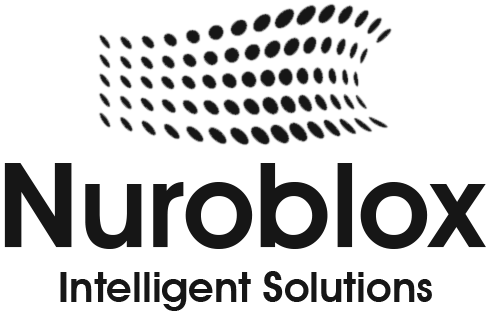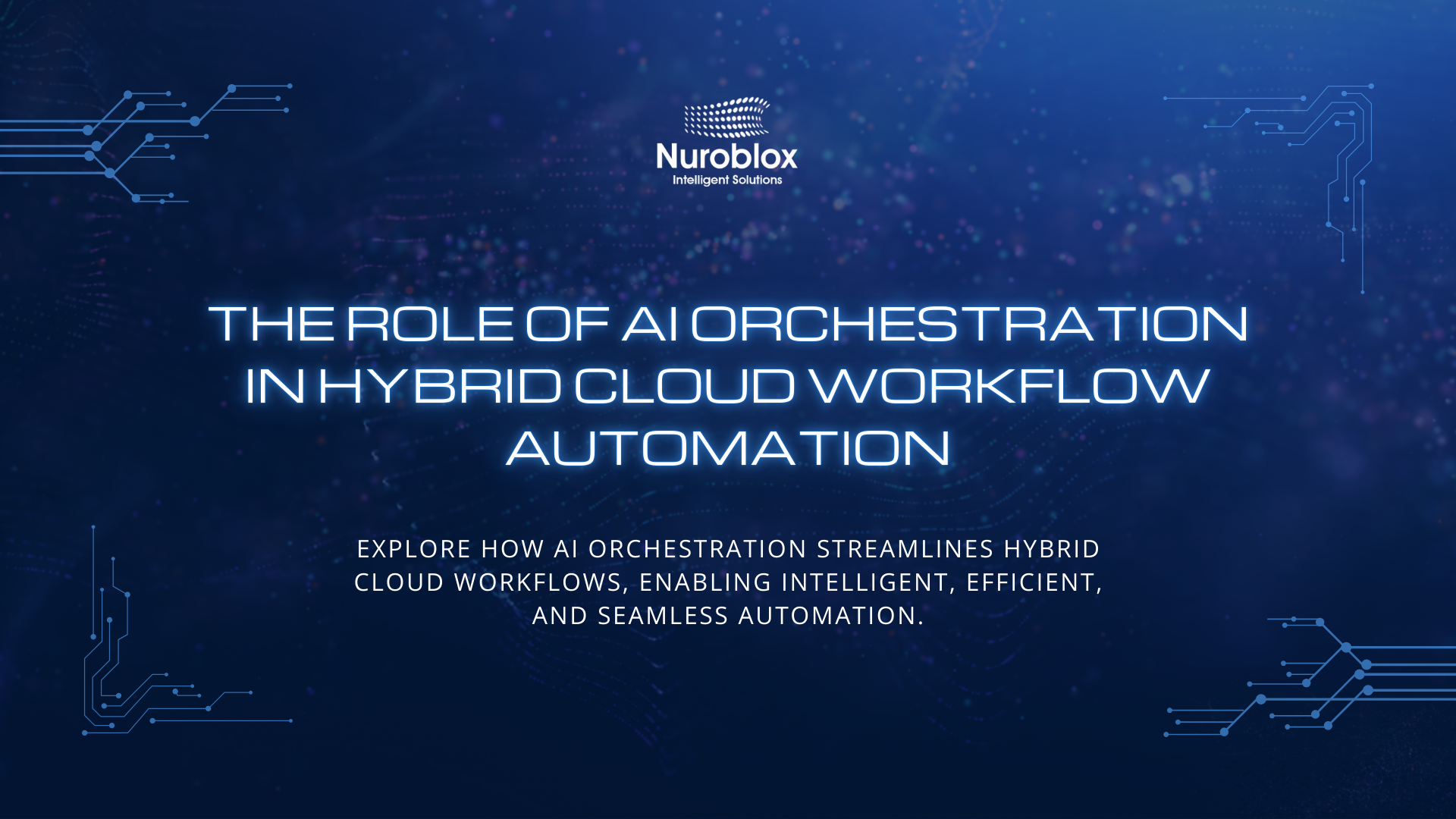The Role of AI Orchestration in Hybrid Cloud Workflow Automation
The modern enterprise runs on a complex web of infrastructure. Hybrid cloud environments, combining the security of on-premise data centers with the scalability of public clouds, have become the de facto standard for businesses seeking both agility and control. However, this distribution of resources creates a significant challenge: managing and automating workflows across disparate systems is fraught with complexity, inefficiency, and security risks. As organizations navigate this landscape, a new paradigm is emerging. AI orchestration is the intelligent layer that promises to tame this complexity, transforming fragmented workflows into autonomous, optimized, and secure business processes.
The push toward smarter automation is not just a trend; it’s a market imperative. The global workflow automation market is projected to reach $23.77 billion in 2025 and is on track to hit $37.45 billion by 2030. A significant driver of this growth is the adoption of hybrid deployment models, which are expanding at a compound annual growth rate (CAGR) of 10.21%. This article explores the pivotal role of AI orchestration in this evolution, detailing how it solves the core challenges of hybrid cloud and unlocks new levels of operational excellence. We will cover the core principles of AI orchestration, its transformative benefits, real-world applications, and a strategic blueprint for implementation.
The Hybrid Cloud Paradox – Balancing Agility and Control
Organizations adopt hybrid cloud architectures for compelling reasons. They offer the flexibility to scale resources on demand, the power to leverage cutting-edge cloud services, and the control to keep sensitive data secured within a private environment. This “best of both worlds” approach allows businesses to innovate faster while adhering to strict data sovereignty and compliance mandates.
However, this strategic advantage introduces significant operational hurdles –
- Workflow Fragmentation – Business processes often span multiple environments. A single workflow might begin with data ingestion on-premise, move to a public cloud for machine learning model training, and then deploy the model to edge devices for inference. Manually managing these handoffs is inefficient and prone to error.
- Resource Management Complexity – Optimizing resource allocation across private and public clouds is a constant balancing act. Over-provisioning leads to wasted expenditure, while under-provisioning creates performance bottlenecks. Without an intelligent system, IT teams are often stuck in a reactive, inefficient cycle.
- Security and Compliance Gaps – A distributed environment expands the potential attack surface. Ensuring consistent security policies, managing access controls, and maintaining a clear audit trail across on-premise servers and multiple cloud providers is a monumental task that manual processes cannot handle effectively.
- Operational Silos – Different teams often manage different parts of the infrastructure (e.g., on-premise, AWS, Azure), leading to a lack of visibility and coordinated action. This makes troubleshooting slow and holistic optimization nearly impossible.
What is AI Orchestration? The Conductor for Your Digital Enterprise
AI orchestration is the practice of using artificial intelligence to coordinate and manage end-to-end workflows, including the underlying AI models, data pipelines, and IT systems. It is a significant leap beyond traditional automation, which typically focuses on automating discrete, rule-based tasks. AI orchestration, in contrast, manages the entire lifecycle of complex, dynamic processes that span multiple systems and environments.
Think of a symphony orchestra. Simple automation is like having a single musician play their part perfectly. AI orchestration is the conductor who ensures every musician and section plays in perfect harmony, adjusting the tempo, dynamics, and cues in real-time to create a flawless performance.
In a hybrid cloud context, the AI orchestration layer serves as this intelligent conductor. It provides a unified control plane to design, execute, monitor, and govern workflows, no matter where the data resides or the computation happens.
The Transformative Impact of AI Orchestration on Hybrid Workflows
By integrating AI into the management layer, organizations can move from manual, reactive operations to an autonomous, predictive model. This shift delivers profound benefits across the enterprise.
Intelligent Resource Allocation and Optimization
In a hybrid environment, the most efficient place to run a workload depends on factors like cost, latency, data sensitivity, and available computing power. AI orchestration automates this complex decision-making process. By analyzing historical usage data and real-time demand, AI algorithms can predict future resource needs and dynamically allocate workloads to the most suitable environment. For example, an orchestration platform can automatically burst a training job from an on-premise GPU cluster to the public cloud to access more powerful hardware, then scale the resources back down once the job is complete, optimizing both performance and cost.
Unbreakable Security and Compliance
AI orchestration is a powerful tool for enforcing robust security in a complex hybrid setting. AI-powered security monitoring can analyze network traffic and logs from all environments in real-time to detect anomalies and identify potential threats far faster than a human team.
Furthermore, orchestration centralizes governance. Instead of managing disparate security policies, organizations can define rules for data handling, access control, and encryption at the orchestration layer. The platform then automatically enforces these policies across every workflow, ensuring that sensitive data is processed only in compliant environments (e.g., keeping personally identifiable information on-premise) and providing a complete, immutable audit trail for regulatory reporting.
Self-Healing Infrastructure and Autonomous Operations
One of the most powerful capabilities of AI-powered orchestration is the creation of self-healing systems. Traditional IT operations involve teams manually responding to alerts when a system fails. AI orchestration flips this model on its head. The system can continuously monitor the health of applications and infrastructure, predict potential failures before they occur, and automatically trigger remediation workflows. This could involve rerouting traffic, restarting a failed service, or scaling up resources to handle an unexpected load. This level of autonomy dramatically reduces downtime and frees up skilled engineers to focus on innovation rather than firefighting.
Accelerated Development and Deployment Cycles
AI can be woven into the entire application development lifecycle to increase velocity and reduce
errors. In a hybrid cloud, AI-powered tools can streamline CI/CD pipelines by automating code
testing, suggesting code optimizations, and even identifying potential architectural improvements
for applications. The orchestration platform ensures that these automated development workflows
run seamlessly across different environments, from a developer’s local machine to staging
servers in the private cloud and production instances in the public cloud.
Real-World Use Cases – AI Orchestration in Action
The practical applications of AI orchestration in hybrid cloud are vast and span every industry.
Financial Services – Balancing Security and Scalability
A global bank needs to continuously update its fraud detection models. The training process requires access to highly sensitive customer transaction data, which must remain within the bank’s private data centers to comply with regulations. However, the inference process scoring millions of live transactions per second requires the massive scalability of the public cloud.
AI Orchestration Solution – An AI orchestration platform manages the entire workflow. It automates the process of pulling sanitized data for model training on-premise. Once the model is trained and validated, the platform securely packages it and deploys it to scalable inference endpoints in the public cloud. The orchestrator monitors the model’s performance in real-time and can automatically trigger a retrain-and-deploy cycle if its accuracy degrades, all while maintaining a strict security posture.
Manufacturing – From Edge to Cloud
A smart factory uses thousands of IoT sensors on its assembly line to monitor equipment health and product quality. Real-time decisions, like stopping a machine to prevent a defect, must be made in milliseconds at the edge. However, long-term predictive maintenance analysis requires the immense processing power of the cloud.
AI Orchestration Solution – The orchestration platform manages a three-tiered workflow.
- Edge – Lightweight AI models run on edge devices for immediate anomaly detection.
- On-Premise – Data is aggregated in an on-premise data historian for short-term analysis and compliance.
- Cloud – The orchestration platform periodically transfers this data to a public cloud data lake, where more complex machine learning models are trained to predict equipment failure. The updated models are then automatically tested and pushed back to the edge devices.
Healthcare – Compliant, Patient-Centric Workflows
The healthcare industry is accelerating its adoption of workflow automation, with the segment growing at an 11.38% CAGR. A hospital wants to use an AI diagnostic tool to help radiologists identify conditions from medical images. The AI model must be HIPAA-compliant, and its findings need to be integrated with the patient’s electronic health record (EHR) and the hospital’s billing system.
AI Orchestration Solution – The AI orchestration platform ensures the entire process is secure
and efficient. It creates a workflow where a medical image, once uploaded, is routed to a
HIPAA-compliant, private cloud environment for analysis by the AI model. The orchestrator then
takes the model’s output, routes it to the correct radiologist for verification, and upon approval,
automatically updates the patient’s EHR and triggers the appropriate billing code all without
manual intervention

Adopting AI orchestration is a transformative journey that requires a clear strategy.
Define Your Strategy and Start Small
Avoid a “big bang” approach. Begin by identifying a single, high-impact business process that is currently hampered by the complexities of your hybrid environment. Focus on delivering measurable value for this initial use case to build momentum and demonstrate the ROI of orchestration.
Choose the Right Platform
The right orchestration platform is the cornerstone of your strategy. Look for solutions that offer –
- True Hybrid and Multi-Cloud Support – The platform must be able to natively connect to and manage resources across on-premise data centers and major public clouds.
- Integrated Governance and Security – Look for built-in tools for managing access control, enforcing data policies, and providing comprehensive audit logs.
- Low-Code and Pro-Code Interfaces – A successful platform should empower both business analysts (with visual, low-code workflow builders) and data scientists (with Python-based SDKs) to build and manage automated processes.
- Extensibility – Ensure the platform has a rich library of pre-built connectors for the applications, databases, and services your organization uses.
Modern orchestration layers, often built on open-source foundations like Flyte, provide the powerful, code-native frameworks needed for managing complex AI and data workflows in a hybrid world.
Foster a Culture of Automation
Technology alone is not enough. Successful adoption of AI orchestration requires a cultural shift. This involves breaking down silos between development, operations, and security teams (DevSecOps) and empowering employees to identify opportunities for automation within their own domains. Invest in training and create a center of excellence to establish best practices and champion the value of intelligent automation across the organization.
The Future is Autonomous
The complexity of hybrid cloud is not a temporary problem, it is the new reality of enterprise IT. Organizations that continue to rely on manual processes and fragmented automation tools will inevitably fall behind. AI orchestration offers a path forward, providing the intelligent control plane needed to transform this complexity from a liability into a strategic advantage. It allows businesses to fully capitalize on the promise of the hybrid cloud: to be agile, scalable, secure, and innovative, all at once. The journey toward a fully autonomous, self-optimizing enterprise has begun. The critical question for every leader is no longer if they should embrace intelligent orchestration, but how quickly they can master it.


